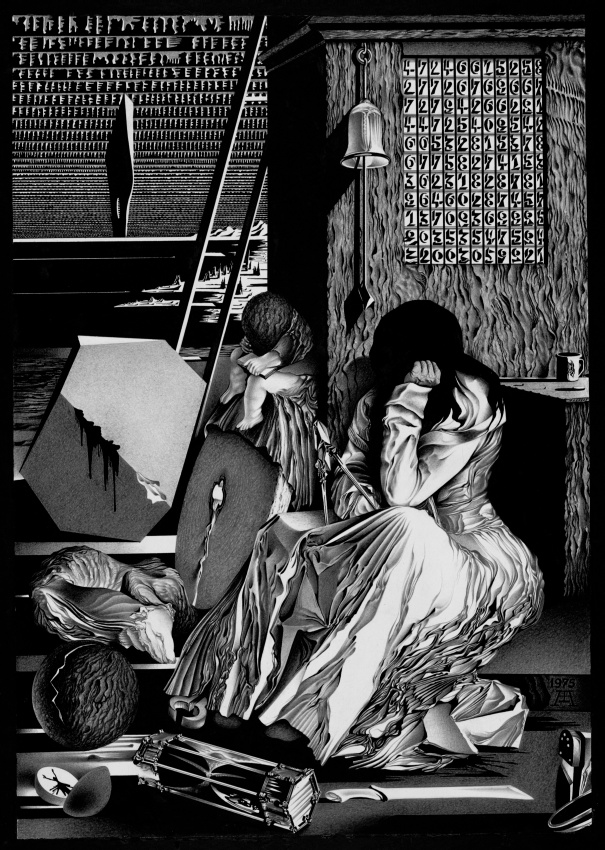Anti-Dürer. From the cycle: Dialogue with authors of the 16th century
No. 175, 1975
( Geometric fantasy on the theme of concepts in general mathematics and random number generators)
India ink and pencil on paper, 44 x 62 cm.
Two figures, draped in flowing robes, sit meditating in this mathematical fantasy land. An hourglass rests in the foreground, a landscape rolls off into the distance, and a bell hangs on a wall waiting to be struck. In fact, the engraving "Melancholia" by the 16th-century artist Albrecht Dürer inspired this image. Since Dürer's time, so much has changed in our understanding of the universe, and our knowledge of mathematics has so vastly grown. Yet, basic truths remain the same. Many mathematical ideas wend their way through this picture. For instance, hanging on the wall in the upper right-hand corner is the number e, the first 121 digits unwinding counterclockwise from the center in a spiral square. Inscribed in the clapper of the hanging bell is a representation of a separatrix diagram of a critical point of index one for a smooth function defined in three-dimensional space. Even the clouds in the background were serendipitously inspired by mathematical forms.
